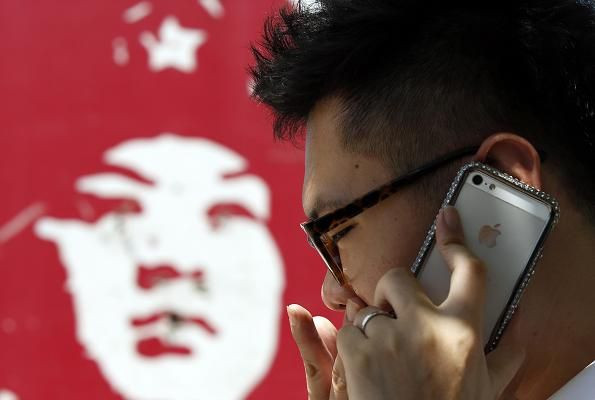Apple Inc. (AAPL) - China Mobile (CHL) Deal: How Many iPhone 5s And 5c Models Can Apple Really Expect To Move In China?

Long before Apple Inc. (Nasdaq:AAPL) and China Mobile (NYSE:CHL) signed the deal to sell iPhones and services in the world's second-largest economy this week , the 760 million had been tossed around. That’s the number of subscribers China Mobile, the world’s largest mobile carrier, has and the number of potential new Apple customers. But on closer inspection the number Apple actually has any reasonable hope for is much, much smaller.
First, a number that has received less media attention -- 42 million. That's the number of China Mobile subscribers who already have iPhones. These 42 million are the Apple fans that gladly made do with the carrier’s slow 2G network for the joy of owning the company's iconic phone. They won’t necessarily purchase new units but they'll undoubtedly be glad to have a faster network for their data, according to the Next Web.
But that’s OK, there are still plenty of people who don’t currently have iPhones but who will jump at the chance to own one, right? Not excatly. With high iPhone prices in a country where there are many enormously wealthy, but the majority are not, sale may be slower than some hope.
“Perhaps 100 million Chinese people can afford premium products such as the iPhone,” Benedict Evans of Enders Analysis told Bloomberg News in an email. That doesn’t mean all of them will want an iPhone, or that they don’t already have one.
Of course if China Mobile decides to take a hit and heavily subsidize the iPhone at a comparable level to its competitors China Unicom Limited (NYSE:CHU) and China Telecom Corporation Limited (NYSE:CHA) -- both of whom offer the iPhone 5s for free if bundled with a long-term contract -- many more could be induced to splurge on an iPhone. But that also means China Mobile will be adding to its already steep spending for 2014, with its investment in 500,000 new 4G base stations by the end of next year.
In addition, China’s telecoms regulator mandated that China Telecom and China Unicom will pay less interconnection fees to China Mobile, in order to encourage competition. Assuming the adjustment will take place on Jan. 1, 2014, it would cut sharply cut China Mobile’s interconnection revenue.
“China Mobile’s 2014 net profit is expected to fall 3% due to the latest interconnection settlement changes. But the net profit of China Telecom and China Unicom are expected to rise 12.5% and 14%, respectively,” said Shanghai-based Yuanta analyst Nice Wang, according to the Wall Street Journal.
Analysts have been expecting Apple to ship between 15 and 25 million new iPhones through China Mobile’s distribution channels alone in 2014, but given the above factors, the actual number might be closer to Morgan Stanley’s estimate of 12 million new units, though analyst Katy Huberty said that sales could be as low as five million or as high as 23 million, according to BusinessWeek.
Posting on China's most popular microblogging site Weibo point to the same unoptimistic sentiment for the Apple-China Mobile deal. Most commenters there wager it's not the gamechanger many had hoped for.
"We are not switching," user 小咪88年 wrote. "China Telecom already has us bound in contract for two years, China Mobile is behind."
"Apple, China Mobile, China Mobile, Apple," wrote user 大梅肉肉. "Can we have some practical news, like lowering mobile fees?"
Even if the numbers are not as high as some expect the deal was without a doubt a good development for Apple, which until recently struggled in China. But with the iPhone 5s, the tide is already turning. The company now has 12 percent of the Chinese smartphone market following a booming October, making Apple the third-biggest smartphone company in China.
Some even believe Apple could soon overtake Korean electronics giant Samsung Electronics Co., Ltd (KRX:005930).
“[Having] Apple iPhone 5s at all three carriers will for sure ignite a ‘price war’ boosting the overall iPhone 5s sales in China," said Tom Kang, a researcher at Counterpoint. “This might allow Apple to even become the No.1 smartphone player in December or January in China.”
© Copyright IBTimes 2025. All rights reserved.




















